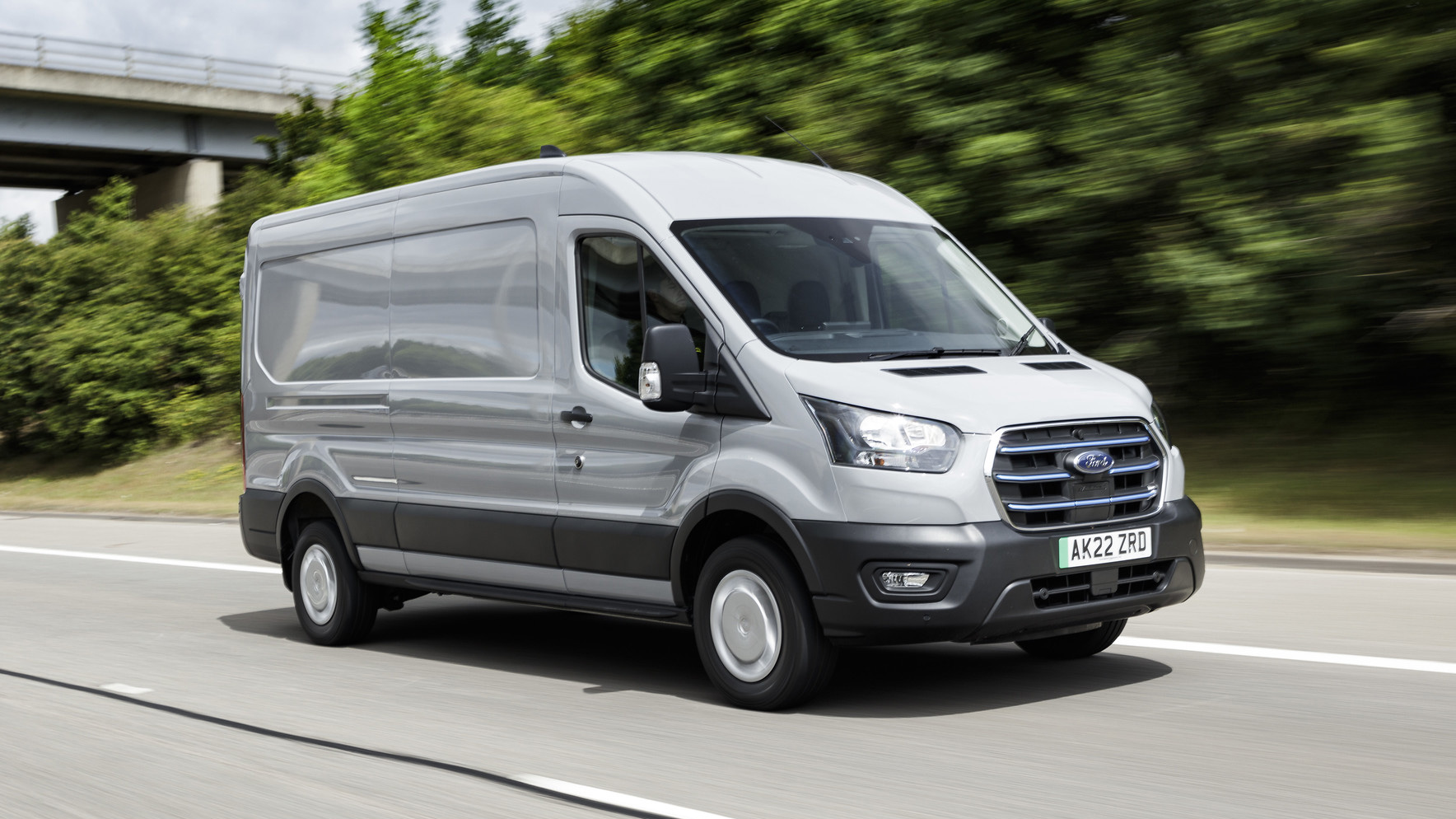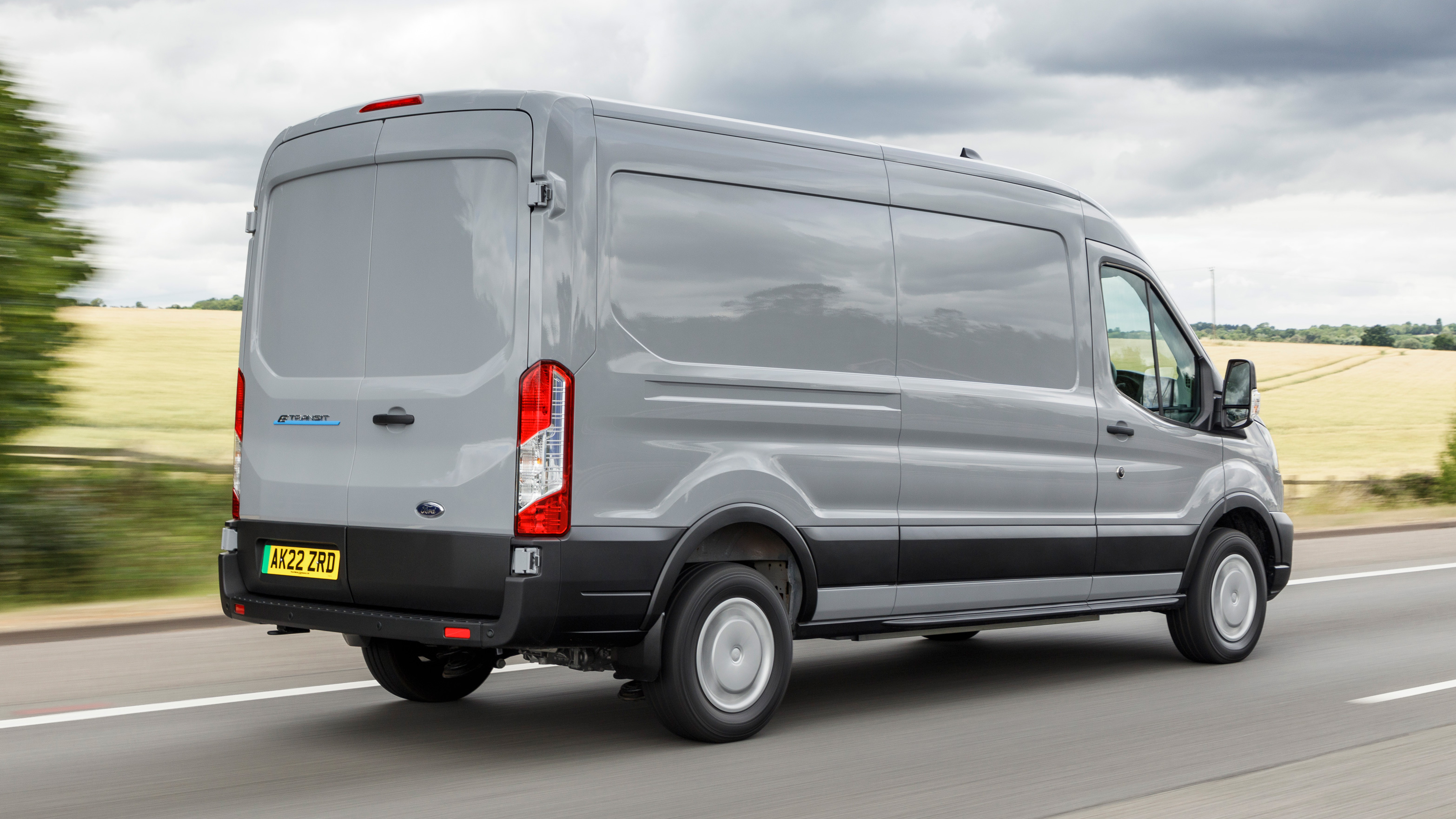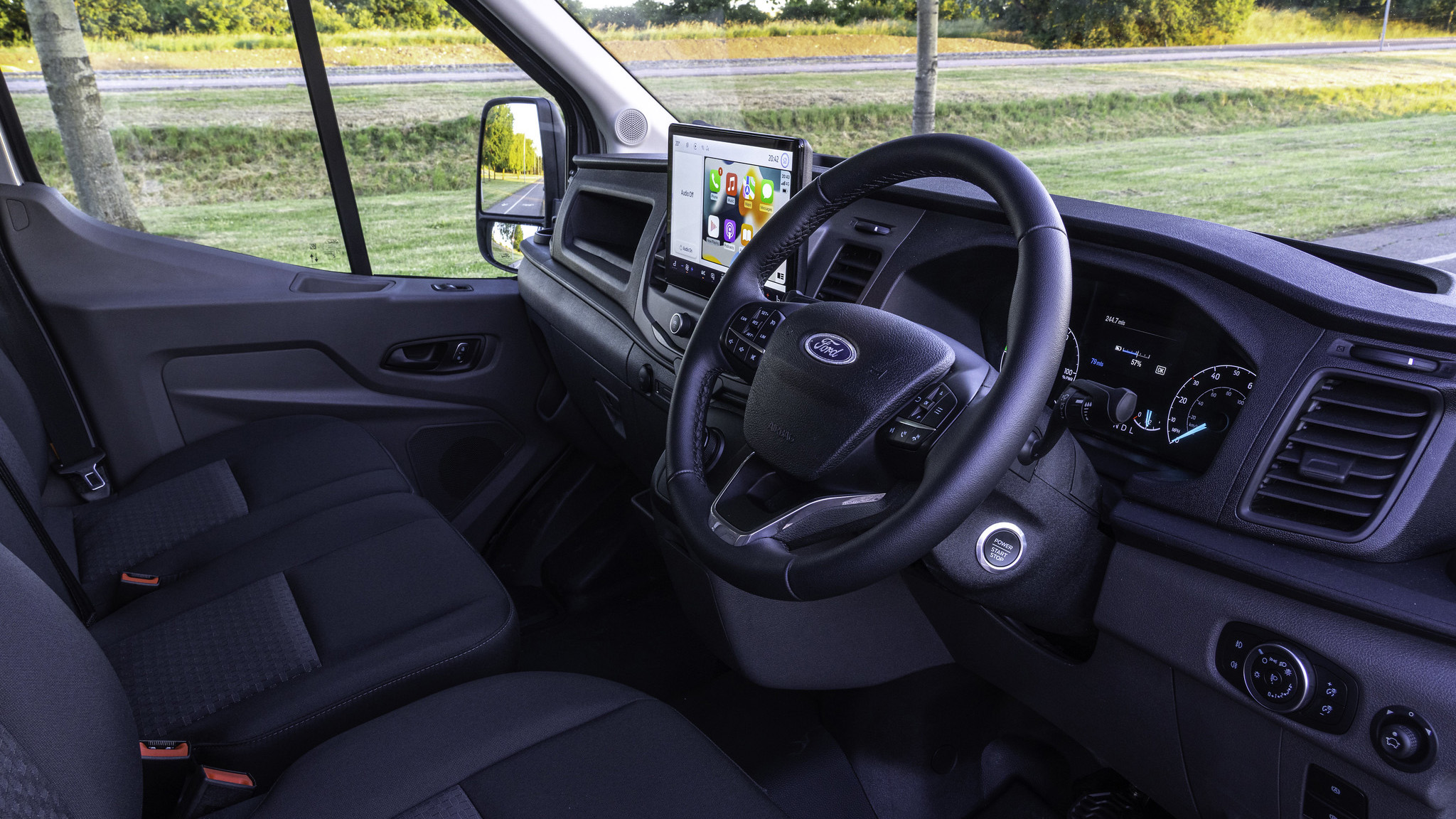
Ford e-Transit review
Driving
What is it like to drive?
This is primarily a review of the full-size Transit, so there's nothing too ridiculous here, simply because we’re not going to be discussing on-the-limit behaviour or power-on oversteer unless you’re really committed. Strip away the bodywork and you’ll find a 68 or 89kWh battery mounted low under the floor of the e-Transit, just like in an electric car. The motor and associated gubbins are located aft near the rear axle, producing either 181bhp or 265bhp. Both versions have the same 318lb ft of torque.
There’s nothing between the axles apart from brake lines and chassis – no driveshaft or exhaust, for obvious reasons. The rear suspension is heavy duty and fully independent, which should mean reliable handling loaded or unloaded, though we’ve only tried it with a big, light wooden box lashed into the rear to show off the tie downs. Suffice to say, it rides unlike any Transit before it, a feeling underlined by the lack of shake, rattle and roll. It’s a really quite serene place to spend time.
Noted. How fast is it?
As far as power goes, electric suits load lugging, simply because the available torque is always front and centre. No, it’s not very fast, but it's quite sprightly from a standstill and it’ll keep up with traffic with ease; the one-speed box seamlessly pulling from the lights right up to about 50mph.
There’s no space under the nose by the way, that’s set up with the electric control systems that cleverly mimic a crash structure, and also an under-nose mounted spare, should you option it.
Is it easy to drive?
Oh yes: a rotary dial in the centre console picks drive or reverse, then you simply stop and go with the pedals. There’s a light regen braking system (push ‘L’ in the middle of the gear selector or tap the brakes), and three modes. Normal is for everyday stuff, ‘Slippery’ is for when it’s horrible out and you’ve got a load on, and ‘Eco’ downplays the top speed, acceleration and aircon to provide what Ford reckons to be an 8-10 per cent range advantage.
Useful if I’m in desperate need of a charge, right?
Indeed. It’s worth having if you need to scoot back to the depot for an 22kW slow charge (six hours) or even slower wallbox (an overnight job) via the charge port on the nose.
If you do get caught short out in the wild, there’s respectable 115kW DC fast charging with the smaller battery or 180kW with the bigger one, which should see 10-80 per cent in 37 and 28 minutes respectively. Remember though, that'll cost you. And you'll have to try and fit the thing inside a charging bay without blocking access for everyone else.
Interestingly there’s Ford Pass for charging aggregation/access, and it’ll bill back to wherever you want.
Other than that, there’s decent forward vision, back-up and top-down cameras on the right spec and a surprisingly nimble turning circle. When you add in the whizzy gear selector, you can punt the e-Transit around pretty much like a car. Albeit one with a 950-1,758kg payload that’s hellish to parallel park.
And what about the smaller Transits?
Well, first thing to note is that the Courier (that's the one on foreign plates in the pics above) gets Puma/Fiesta underpinnings, and it shows. It’s fun to drive and corners decently with little body roll, at least loaded up with sand in the rear as ours was when we test drove it. It’s not exactly quick, with 0-62mph taking 10.7 seconds (unloaded), but it too gets Eco, Normal, Sport, and Slippery modes. You’ll not want to drive it in Eco for too long if you want to get anywhere on time (or upset any customers) mind.
Still, the regen is pretty predictable, meaning it slows exactly as you’d expect when you come off the accelerator pedal, and in warm temperatures we managed 3.8mi/kWh, or 160 real world miles. The Courier also supports 100kW DC charging, meaning its 43kWh battery can be recharged from 10-80 per cent in 23 mins. A 10-100 per cent charge takes just over five hours on a wallbox at home or at the depot.
The e-Transit Custom doesn’t handle quite as well, but it still feels leagues better suited to electric power than it does to diesel combustion. A 0-62mph time of 7.4s in the 215bhp version (12.0s with the 134bhp motor) and 306lb ft of torque gives you far greater confidence when pulling out at roundabouts or overtaking, and even when sat in slow moving traffic it’s a far quieter and more comfortable place to be.
All versions get a heat pump as standard, maximising range in winter too. It also gets faster 125kW DC charging compared to the Courier too, enabling a 10-80 per cent charge of its 64kWh battery in 39 minutes. And likely on public chargers a hefty bill too. A full juice using an 11kW AC charge takes just under seven hours.
Featured

Trending this week
- Car Review
BMW 1 Series
- Top Gear's Top 9
Nine dreadful bits of 'homeware' made by carmakers






